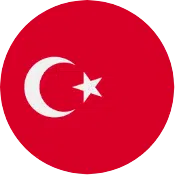
Spanish Alphabet – A to Z
Hola, language enthusiasts! Have you embarked on the exciting journey of learning Spanish? If yes, you have likely encountered the beautiful and rhythmic sounds of the Spanish language. One of the first steps in mastering this linguistic dance is getting to know the Spanish alphabet. Discover what is the Spanish Alphabet from A to Z and start learning Spanish.
The Spanish Alphabet
The Spanish alphabet, or “abecedario,” is a 27-letter masterpiece that adds a unique flair to your language learning experience. Unlike the English alphabet, Spanish includes a special character called “ñ” (pronounced ‘enye’). it adds a delightful twist to certain words.
Let’s take a look at the Spanish alphabet, letter by letter, and uncover the secrets that make it a symphony of sounds.

A – Z: The Building Blocks
A (ah): Like the ‘a’ in “father,” this letter is the starting point of our journey.
B (be): Similar to the English ‘b,’ but pay attention—it’s not as explosive. Imagine it’s taking a gentle siesta.
C (ce): Depending on its position in a word, ‘c’ can either be soft, like the ‘s’ in “ceiling,” or hard, like the ‘k’ in “cat.”
D (de): Pronounced like the English ‘d,’ but softer. It’s the ‘d’ in “ladder,” not “dare.”
E (eh): A short and sweet ‘e,’ similar to the ‘e’ in “met.”
F (efe): A friendly ‘f,’ just like in English.
G (ge): This letter has two personas. When followed by ‘e,’ ‘i,’ or ‘y,’ it’s pronounced like the ‘h’ in “hot.” Otherwise, it’s a robust ‘g’ as in “go.”
H (hache): Unlike its English counterpart, the Spanish ‘h’ is always silent. It’s the invisible hero of the alphabet.
I (ee): A bright and cheerful ‘i,’ as in “ski.”
J (jota): Get ready to roll your tongue! This letter produces a throaty ‘h’ sound, almost like clearing your throat. Practice makes perfect.
K (ka): Rarely used in Spanish and typically found in loanwords, like “kilo.”
L (ele): A smooth ‘l,’ just like in English.
M (eme): Another familiar friend, the ‘m’ remains unchanged.
Sign up for our offers
Exclusive discounts on your course with Cactus directly on your inbox!
N (ene): Introducing ‘enye’ (ñ), a unique feature of the Spanish alphabet. It’s a nasal sound like the ‘ny’ in “canyon.”
O (oh): A round and full ‘o,’ similar to the ‘o’ in “go.”
P (pe): Like the English ‘p,’ but softer.
Q (cu): Always followed by ‘u,’ and together, they make a ‘k’ sound, like in “queen.”
R (ere): Roll those ‘r’s! Practice trills to perfect this distinct sound.
S (ese): A soft ‘s,’ similar to the ‘s’ in “sun.”
T (te): Another familiar letter, pronounced like the English ‘t.’
U (oo): A long ‘u,’ similar to the ‘oo’ in “food.”
V (ve): While similar to ‘b,’ it has a more buzzing quality, like a gentle vibration.
W (doble ve): Used in very few words, mostly borrowed from other languages.
X (equis): ‘X’ can be a bit tricky. It sounds like ‘ks’ in English, especially in words borrowed from other languages.
Y (i griega): Similar to the English ‘y’ when used as a consonant. As a vowel, it sounds like the ‘ee’ in “see.”
Z (zeta): Like the ‘th’ in “think” when coming before ‘e’ or ‘i.’ Otherwise, it’s a straightforward ‘z.’
Embracing the Rhythms of Español
Congratulations! You’ve just taken your first steps into the enchanting world of the Spanish alphabet. Like a musical score, each letter contributes to the harmony and cadence of the language.
Now, armed with this knowledge, dive into the vibrant sea of Spanish words and phrases. Practice your pronunciation, and soon enough, you’ll find yourself dancing to the melodious rhythms of Español. Cactus offer a wide range of Spanish language courses, available online or in-person at one of our UK schools.
For those looking for something a bit different, Cactus also offers Spanish language holidays at locations around the world. These holidays allow you to fully immerse yourself in the language while you learn in native-speaking countries and locations.

 French
French German
German Italian
Italian Spanish
Spanish Arabic
Arabic Cantonese
Cantonese Czech
Czech Croatian
Croatian Danish
Danish Dutch
Dutch English
English Greek
Greek Hebrew
Hebrew Hindi
Hindi Japanese
Japanese Korean
Korean Norwegian
Norwegian Polish
Polish Portuguese
Portuguese Russian
Russian Swedish
Swedish Thai
Thai Turkish
Turkish Ukrainian
Ukrainian